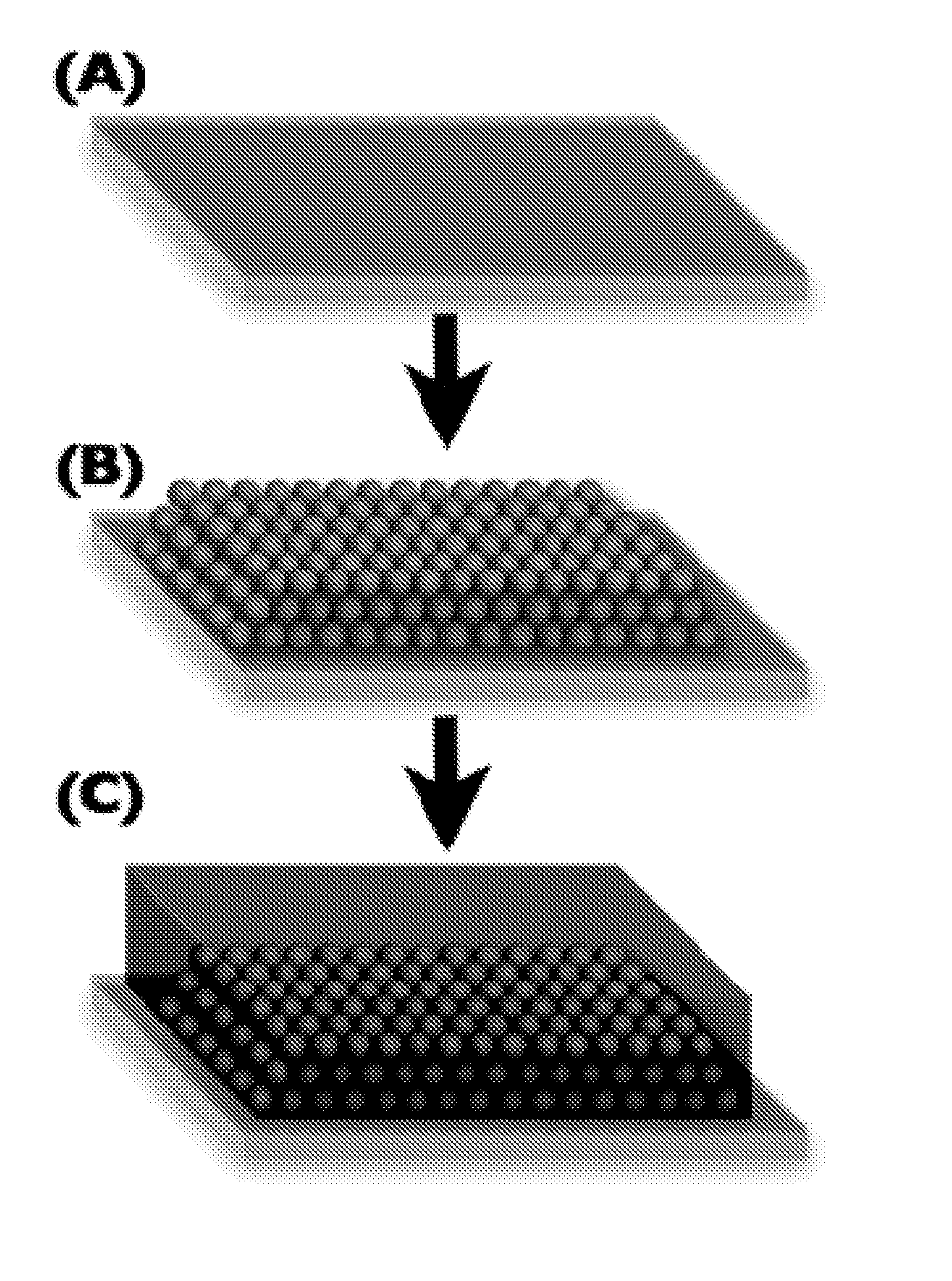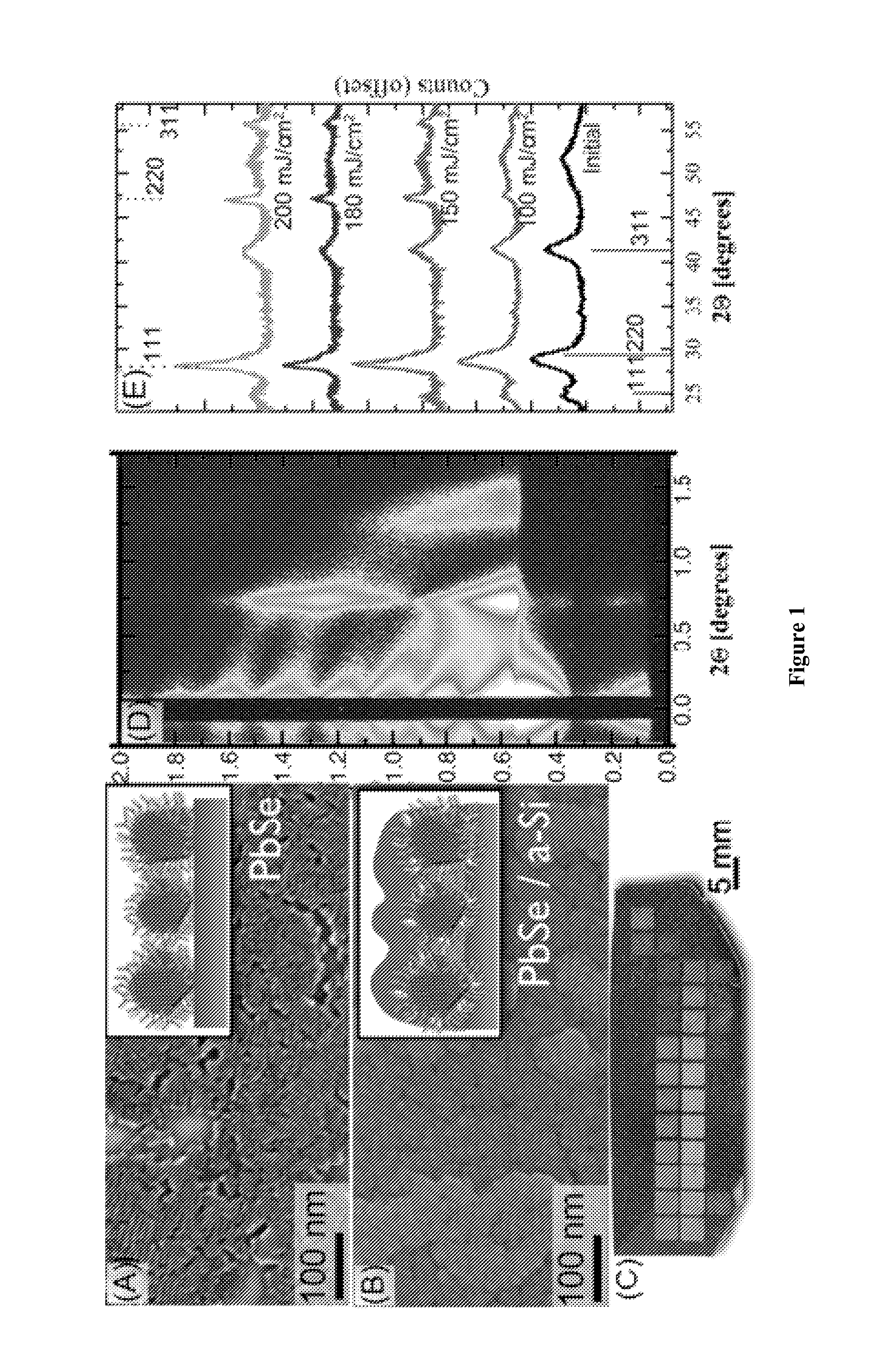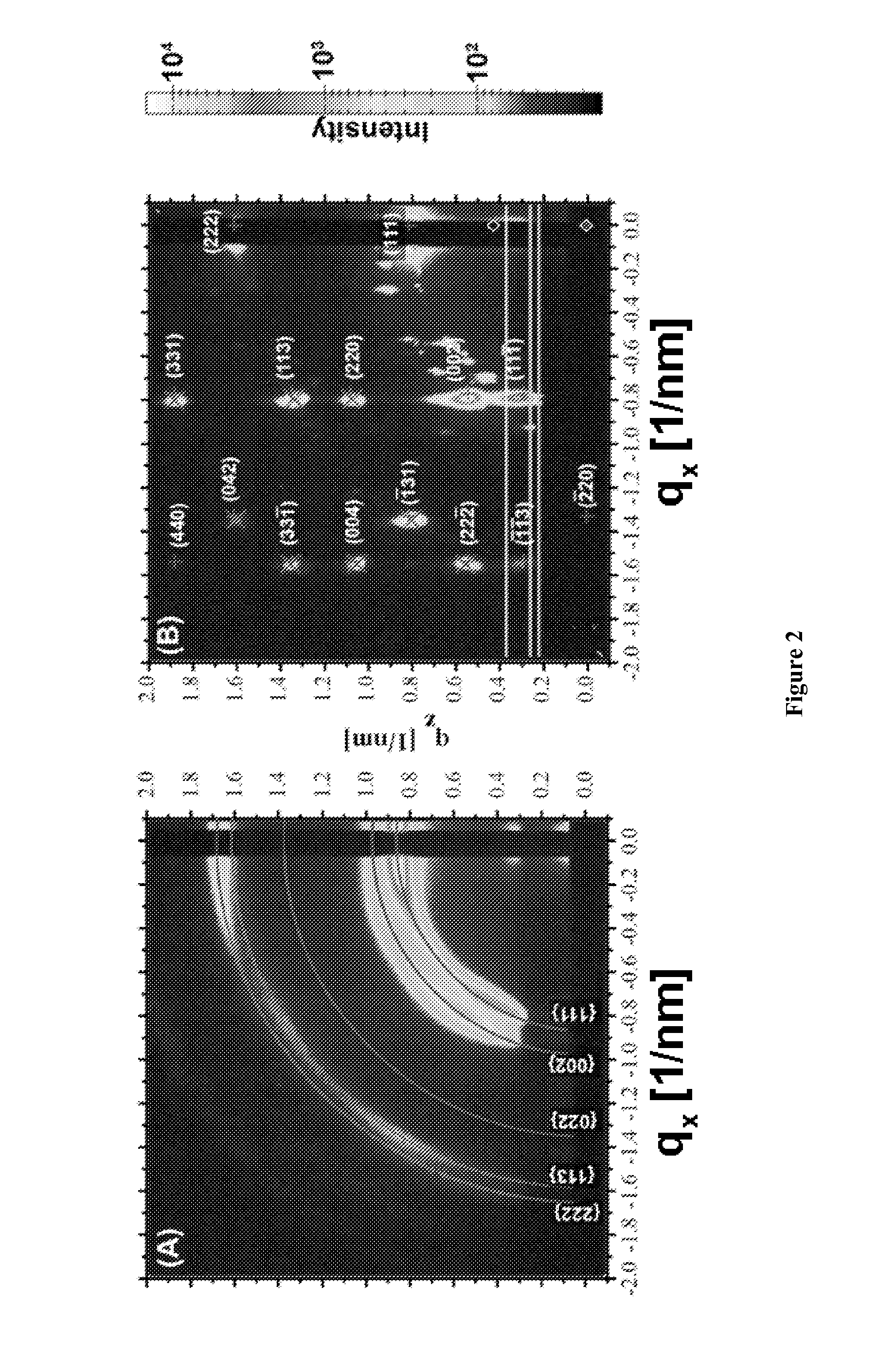Inorganic Bulk Multijunction Materials and Processes for Preparing the Same
a multi-junction, inorganic technology, applied in the field of composite materials, can solve the problems of inability to make a significant contribution to the rapidly rising global energy demand, low production cost of silicon-based solar cells, and low economic competitiveness of solar cells with other energy sources
- Summary
- Abstract
- Description
- Claims
- Application Information
AI Technical Summary
Benefits of technology
Problems solved by technology
Method used
Image
Examples
example 1
Nanocrystal Synthesis
Colloidal PbSe NCs Will be Synthesized According to a Slightly Modified Version of the Hot-Injection Method
[0080]Thin film processing: The optimal colloidal NCs deposition method depends on a variety of factors. Although spin-casting is the method of choice for most organic thin films, the formation of homogeneous NC films with smooth surfaces and high spatial coherence has favored alternative methods including Langmuir films, drop casting, dip-coating or slow evaporation on tilted substrates. These techniques provide control over a broader range of solvent evaporation rates and are more compatible with additional solution-based processing methods that often accompany NC thin-film processing.
[0081]Two complementary approaches are used to fabricate thin films comprised of PbSe NC encapsulated in an amorphous Si matrix. In the first approach, a NC monolayer is deposited from a colloidal suspension followed by sputter deposition of an amorphous silicon (a-Si) or si...
PUM
 Login to View More
Login to View More Abstract
Description
Claims
Application Information
 Login to View More
Login to View More - R&D
- Intellectual Property
- Life Sciences
- Materials
- Tech Scout
- Unparalleled Data Quality
- Higher Quality Content
- 60% Fewer Hallucinations
Browse by: Latest US Patents, China's latest patents, Technical Efficacy Thesaurus, Application Domain, Technology Topic, Popular Technical Reports.
© 2025 PatSnap. All rights reserved.Legal|Privacy policy|Modern Slavery Act Transparency Statement|Sitemap|About US| Contact US: help@patsnap.com



